Pharmacognostic studies of stem, roots and leaves of Malva parviflora L.
Shehla Akbar, Uzma Hanif, Jaffar AliSaiqa Ishtiaq*
1University College of Pharmacy, University of the Punjab, Lahore-54000, Pakistan
2Department of Botany, Government College University Lahore-54000, Pakistan
3Department of Botany, University of the Punjab, Lahore-54000, Pakistan
Pharmacognostic studies of stem, roots and leaves of Malva parviflora L.
Shehla Akbar1, Uzma Hanif2, Jaffar Ali3Saiqa Ishtiaq1*
1University College of Pharmacy, University of the Punjab, Lahore-54000, Pakistan
2Department of Botany, Government College University Lahore-54000, Pakistan
3Department of Botany, University of the Punjab, Lahore-54000, Pakistan
PEER REVIEW
Peer reviewer
Dr. Sajid Bashir. Chairman and Dean, Faculty of Pharmacy University of Sargodha, Sargodha. Pakistan.
Tel: 923009389717
E-mail: sajidpharm@gmail.com
Comments
This is a worthwhile work in which the author has established evaluation standards of a medicinal plant. These evaluations are carried out to ensure authentication of different parts of M. parviflora and results can be used for qualitative and quantitative analyses of this herbal drug.
Details on Page 415
Objective:To establish quality control parameters of a locally occurring medicinal plant, Malva parviflora which is utilized as folk medicine in Sialkot area in Pakistan.
Malva parviflora, Stomatal index, Palisade ratio, Chloral hydrate, Evaluation, Transverse section
1. Introduction
Medicinal plants are playing very active role in traditional medicines for the treatment of various ailments[1]. However a key obstacle, which has hindered the promotion in use of alternative medicines in the developed countries, is no evidence of documentation and absence of stringent quality control measures. There is a need for the record of all the research work carried out on traditional medicines in the form of documentation. With this drawback, it becomes extremely important to make surety about the standardization of the plant and parts of plant to be used as a medicine. For the process of standardization, we can use different techniques and methodology to achieve our goal in the stepwise mannere.g.pharmacognostic and phytochemical studies. These steps and processes are helpful in identification and standardization of the plant material. Correct characterization and quality assurance ofstarting material is an essential step to ensure reproducible quality of herbal medicine which will help us to justify its safety and efficacy[2-5]. For this purpose we have done pharmacognostic studies ofMalva parviflora(M. parviflora). In the present studies we have focus our investigations on one of the commonly available plant in Pakistani.e.Malva parviflora. It belongs to Malvaceae family. The plants of this family have a major contribution in the treatment of cough, throat infection and other bronchial problems as well as stomach and intestine irritations. The flowers and leaves are emollient and used for the softening of sensitive area of the skin. It is applied as poultice to reduce swelling and draw out toxins. The leaves help to reduce gut irritation and have laxative effects. Combine withEucalyptus, it makes a good remedy for cough and other chest ailments[4]. Different species are used to treat various diseases,e.g. Gossypium: to treat new born baby ailments, flu, cold, fever and tuberculosis.Hibiscus: to treat cough, stomach troubles, syphilis, urethral discharge, urethritis, ulcers, gonorrhea, tooth ache and leg disease.Sidaspp.: to treat arthritis, sores, cough, bile, anemia, guinea worms, general weakness, snake bite, kidney problem, impotence, placental expellant, lumps, constipation and stomach cramps[5].M. parviflorahas also been used for the treatment of headache, fever, sores and various digestive complaints. A decoction of roots or leaves has also been used as a hair rinse to remove dandruff and to soften the hair[6-9]. It was further investigated that hexane, methanol and water extract of wholeM. parvifloraexhibited strong antibacterial activities against broad range of both Gram positive and Gram negative bacteria[10]. Further, hexane extract of whole herb also showed antiinflammatory activity[8]. Wound healing properties of whole herb ofM. parviflorawas also investigated[11]. Herbal plants or botanical medicines have been used traditionally by herbalist worldwide for the prevention and treatment of liver disease[12].
2. Materials and methods
2.1. Chemicals
All analytical grade chemicals used in this study were purchased form E. Merck, Germany. Formalin, absolute alcohol, safranin, fast green, acetic acid, canada balsam, chloral hydrate, bees wax, H2SO4, NaOH, NHO3, FeCl3, distilled water, aniline, potassium hydroxide, and chloroform.
2.2. Plant collection
The plant was collected during spring season from Sialkot in April 2012, Pakistan. The plant was identified by Mrs. Uzma Hanif, Taxonomist at Government College University Lahore, Pakistan. Voucher No. 1600 was obtained. The whole plant was washed and 3/4th part was shade dried and then pulverized while 1/4th part was subjected to separation of its different partsi.e.leaves, roots, stem and fruit.
2.3. Organoleptic evaluations
Organoleptic evaluations were performed according the the color, size, odor and taste parameters.
2.4. Macroscopic evaluations
Different macroscopic parameters of stem, root, fruit and leaves were noted. Leaves evaluation include absence or presence of petioles and different characters of laminai.e. shape indentations, base, texture, venations, apex. Root was studied for its size, shape, surface, fracture.
2.5. Microscopic evaluations
Microscopy evaluations were done on both qualitative and quantitative basis. All evaluations were performed on labomed compound microscope.
2.5.1. Qualitative microscopy
For qualitative microscopic analysis transverse section of stem, leaf, and root were made by using microtome. Staining procedure was performed as per standard procedure. Various identifying characters were studied with staining.
2.5.1.1. Powdered microscopy
Shade dried leaves, stem, fruit and roots were finely powdered and studied under microscope. Small quantity of different plant parts powder was placed separately on slides and each slide was mounted 2-3 drops of chloral hydrate and each slide was covered with cover slip then examined under microscope. Different cell componentsi.e.cork cells, sieve tubes fibers, lignified fibers, cortex cells, calcium oxalate crystals, mesocarp, endocarp and stomatal cells were noted and photography was done by using digital camera[13].
2.5.1.2. Leaf, root and stem microscopy
In this study, transverse sections of leaf, root and stem were studied under photomicrograph. Staining reagents (safranin and fast green) were applied according to standard method. Different identifying characters were noted with or without staining[6]. The various identifying characters were studied with or without staining and recorded.
The leaf stem and root were fixed in Corney’s modified solution. The all above parts were degassed with vacuum pump. The fixed parts were dehydrated in an ascending series of water, ethyl alcohol, tertiary butyl alcohol mixture. The leaf, stem and root were infiltrated with wax forhardening the soft tissues. The infiltrated leaf, stem and root were placed in wax and allowed to cool down, trimmed the edges the cast block and attached on wooden blocks. The sections were cut with rotary microtome and placed on glass slide having egg albumin adhesive. Thickness of the section was 10 μm.
2.5.2. Quantitative analysis
2.5.2.1. Stomatal number
It is an average number of stomata present per square millimeter of epidermis of leaf. Stomatal index is the percentage in which the number of stomata forms to the total number of epidermal cells. Stomatal index is S×100/ (E+S). Where S is the stomata per unit area, E is the number of epidermal cells in the same unit area. For calculating stomatal index a washed and cleaned piece of leaf was taken and both upper and lower epidermises were peeled with the help of forceps. Stomatal index was calculated by using above given formula.
2.5.2.2. Determination of vein
Small vascular bundle surrounded by many conducting tissues is called vein islet. The end terminal of the vein is the total number of veinlet termination points present per millimeter on the surface of leaf. A small piece of leaf was treated with chloral hydrate in boiling form then with the help of camera lucida, drawing was made. A square was drawn and slide was placed on it. The completing islets which are overlapping two adjacent sides of square were marked to get the value of one square millimeter area. The number of small vascular bundle terminal points was counted within that square to get the value known as vein termination number[14].
2.5.2.3. Determination of palisade ratio
A small piece of leaf was treated with chloral hydrate and examined under light microscope.
Camera lucida was arranged and four cells of epidermis were marked with the help of 4 mm objective lens. After focusing the cells, tracing of the epidermal cells was done. The margins of these palisade cells were intersected. The cells which are covering half of the area were selected and those cells which were less than were excluded. The average number was calculated known as palisade ratio.
2.6. Fluorescence analysis
Fluorescence analysis of the whole plant powder was carried out using standard method[15]. The analysis was done by treating the plant powder with different solvents including both acidic and basic. After treatment they were exposed to UV light (short wave length and long wave length) as well as were observed in day light[16,17]. Fluorescence analysis is an important tool for the screening of those compounds which have the property of exhibiting different colors under UV light. Some compounds are not fluorescent themselves but when they are treated with solvents are converted into fluorescent derivatives. During this analysis the change in color was noted[18].
Fluorescence analysis is a very important and useful tool for the identification of different constituents present in natural products. These constituents exhibited fluorescence under UV light but not show any type of fluorescence when observed in day light. This phenomenon may be due to a particular fluorescent substance or due to some fluorescent derivative formed after treatment with reagents. Still many crude drugs are assessed qualitatively by using this parameter. Powdered leaves, stem, root and fruit materials were analyzed under ordinary light, short ultraviolet wavelength and long ultraviolet wavelength simultaneously after treatment with following organic and inorganic reagent like 50% H2SO4, 10% NaOH, 50% NHO3, FeCl3, distilled water, aniline, potassium hydroxide and chloroform[15].
3. Results
3.1. Organoleptic evaluation
The organoleptic characters of leaves showed the whitish green appearance from both side having star shaped trichome called as stellate hairs. The leaf powder was green in color, rough in texture, slightly aromatic with unpleasant odor and slimy taste. The stem was herbaceous green in nature (soft) having light brown color from the basal side. Roots were light brown in color, aromatic in odor, tasteless. Fruit was schizocarp.
3.2. Macroscopic evaluation
Morphoscopic study indicated that leaves were spiral. Leaves shape reniform, 5-7-lobed, dentate lobes, petiole up to 4 inch long. The lamina has palmately reticulate venation with pulvinus. Surface glabrous and texture leathery. The size of the leaf varied from 45 to 60 cm in width and length respectively. Root is taproot with stellate hairs glabrous or sparsely pubescent with stellate hairs. Stem was 1-10 dm tall that may be prostrate to ascending, simple or branched[19,20]. Fruit was a schizocarp, depressed globose, 0.3 inch (7-8 mm) wide, discoid with 8-12 wedge shaped sections (carpels); carpels separate at maturity; indehiscent. It was 7-8 mm in diameter and separates into 8-12, 1 seeded mericarps. The schizocarp is disc-shaped surrounded by the calyx and brown when ripe.
3.3. Microscopic evaluation
3.3.1. Qualitative microscopy
3.3.1.1. Leaf microscopy
Lamina is dorsoventral. The upper most epidermal layer comprises of small polygonal cells which have irregular margins and beneath the epidermis photosynthetic tissue mesophyll present. The palisade has doubled layer while spongy mesophyll cells were 2 to 3 layered. The cortical region consisted of parenchymatous cells in the central vascular bundle having 4 to 5 layers. The vascular bundle was ovoid having protoxylum and metaxylum. Phloem is present but without phloem transfer cells. Transverse section of leaf is shown in Figure 1. The stellate multicellualr trichomes with glandular base are present on both surfaces of leaf, The epidermal cells are isodiametric. The trichomes present outside show single layer of cells, and star shape with blunt tip and smooth walls (Figure 2).

Figure 1. Transverse section of leaf showing the presence of palisade and spongy mesophyll (100×).
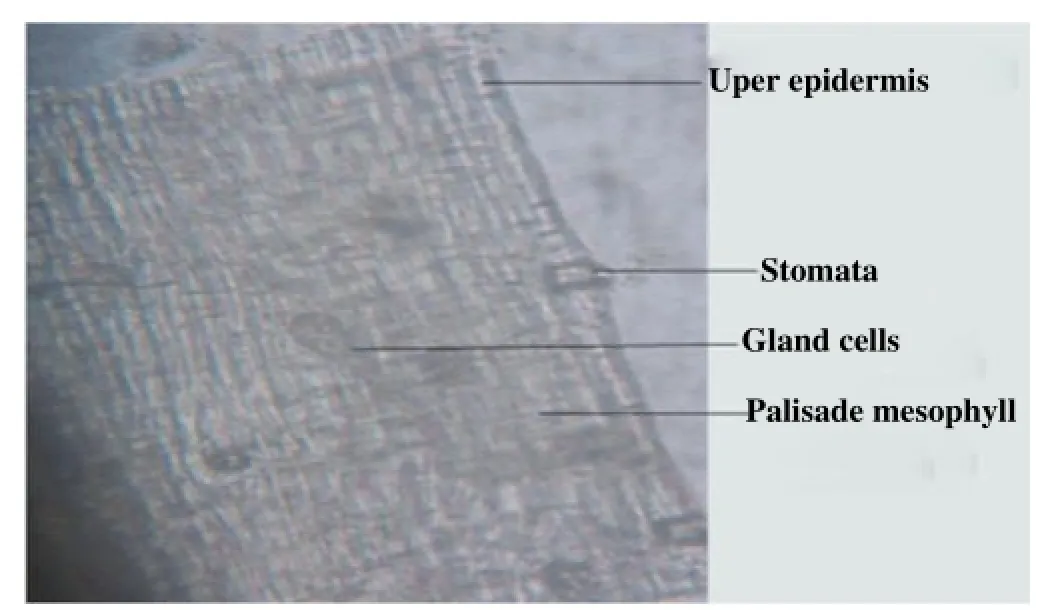
Figure 2. Leaf epidermis by peel off method showing the presence of stomata and trichomes (100×).
3.3.1.2. Root microscopy
Transverse section of root bark ofM. parvifloraL. showed the presence of different types of cork cambium.The sections after staining are present in Figure 3. The cells are initially superficial. Nodes are having tri-lacunar, wall cavities. Cortical bundles are absent. Medullary bundles are present. Included phloem is absent. The secondary phloem stratifies into hard (fibrous) and soft (parenchymatous) zones. Xylem with fiber, tracheids with libriform fibers showing thick lignified walls is shown in Figure 4. Vessel end-walls are simple. Secondary phloem is also shown with thick lignified walls when stained with phloroglucinol.

Figure 3. A piece showing the epidermal and cortical cells (10×).
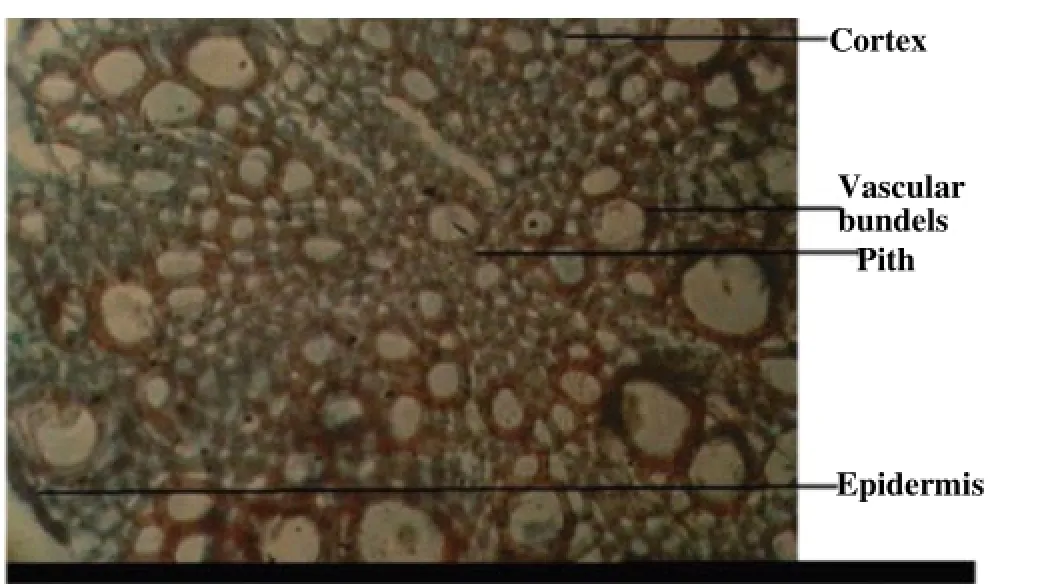
Figure 4. A microscopic observation of root section showing lignified protoxylem and phloem (100×).
3.3.1.3. Stem microscopy
Section of stem is shown in Figure 5. Outer layer of epidermis of loosely arranged cells are present. Cells are oval in shape. Central large portion of stem are occupied by pith, outside of it hypodermis is present. Barrel shaped cells of pith store large amount of food. Vascular bundles are arranged in parallel rays.
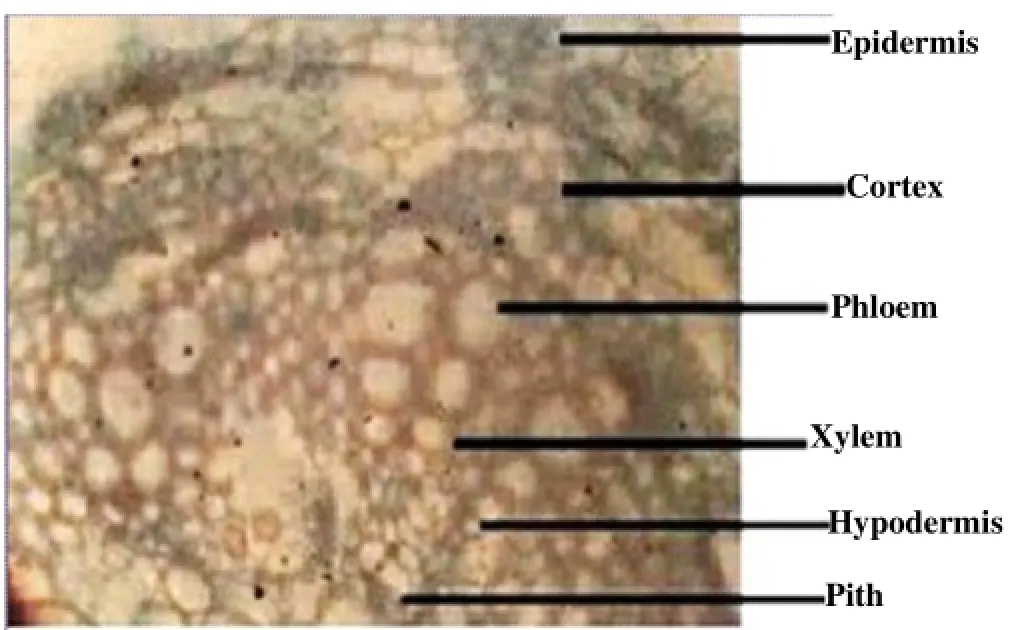
Figure 5. A microscopic observation of stem section showing epidermis and pith (100×).
3.3.2. Powder microscopy
Microscopic observation ofM. parvifloraroot indicated the presence of xylary fibers, sieve tubes members and cortical cells with narrow lumen (Figures 6, 7 and 8).
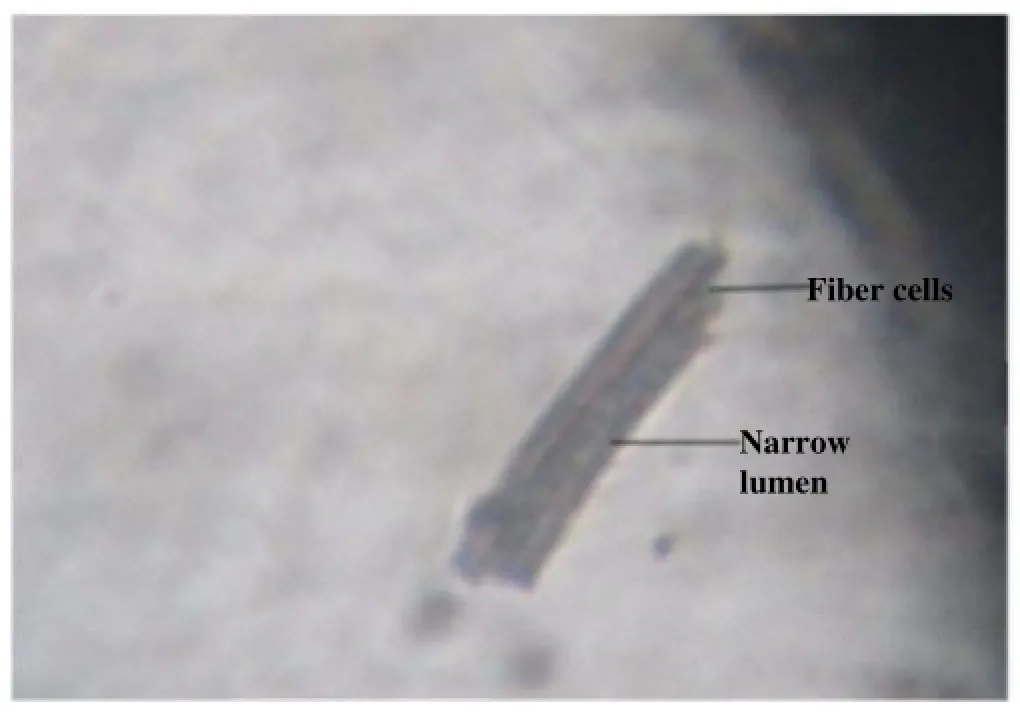
Figure 6. A microscopic observation of fibers (10×).
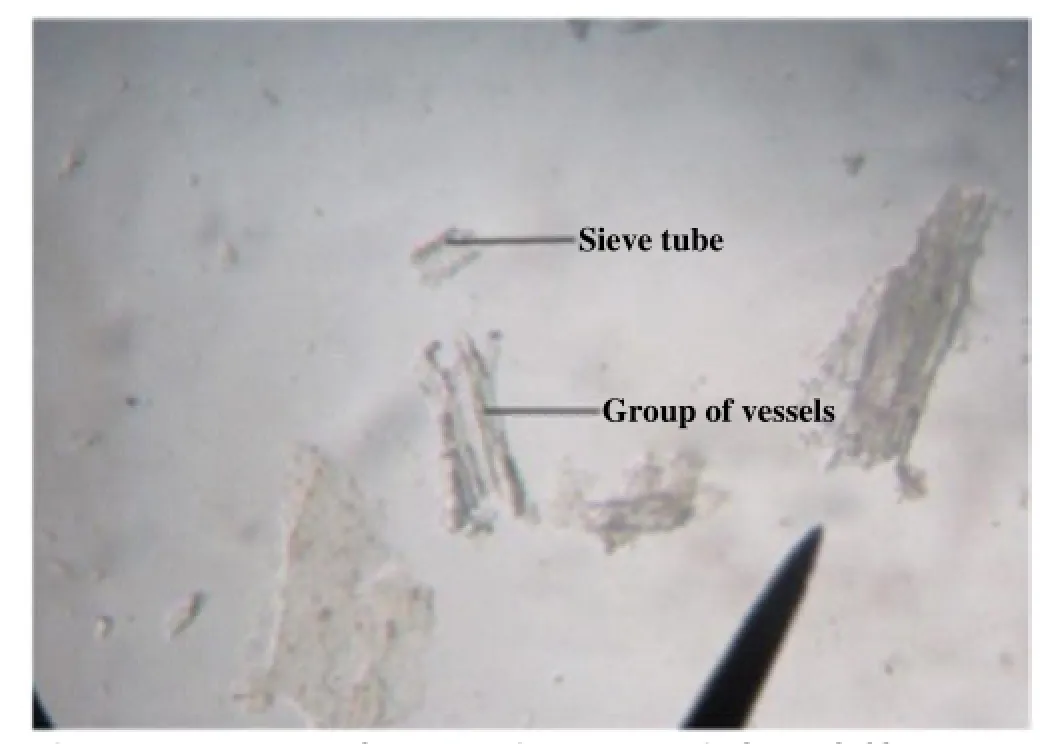
Figure 7. A microscopic observation of components of xylem and phloem (10×).

Figure 8. A microscopic observation of cortical cells (10×).
3.3.3. Quantitative microscopy
Amphianisocytic to Anisocytic stomata inM. parviflora presenton the lower surface of leaves. The stomatal number on the abaxial andadaxial surface was found as 17 and 19, respectively. The stomatal indexes of upper surface and lower surface were found 39.3 and 41.5, respectively. The vein islet and vein termination were calculated as 20 and 16. The palisade ratio was found to be 1.10.
3.4. Fluorescence analysis
The results of fluorescence analysis are given in Table 1.
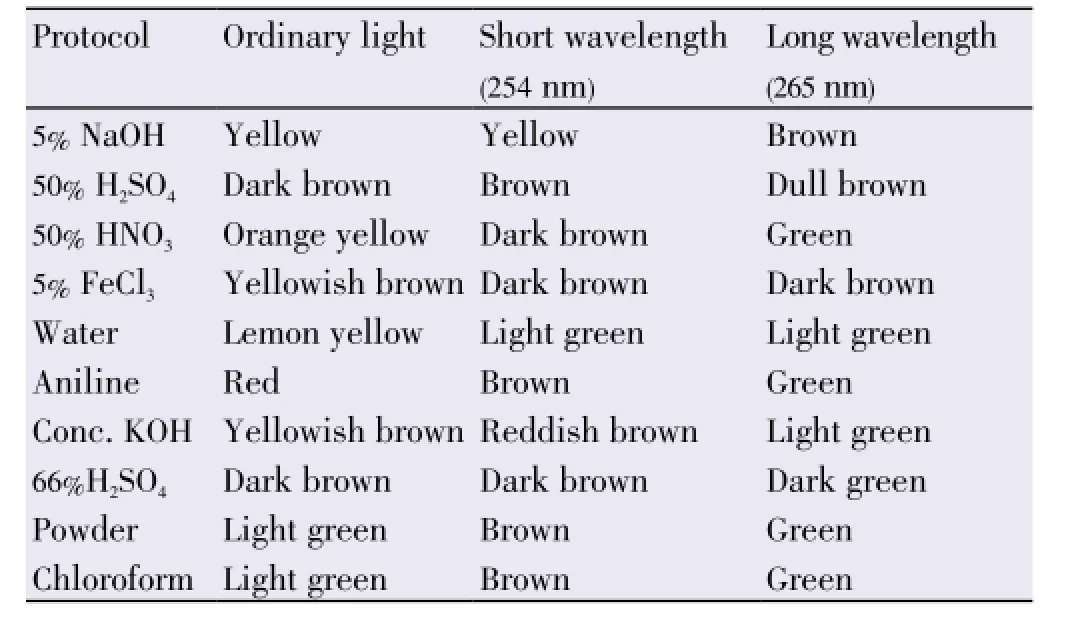
Table 1 Fluorescence analysis of powder of M. parviflora.
4. Discussion
Like the allopathic medicine quality control, the standardization of the herbal medicines is also necessary to assure the quality of the drug because substitute or counterfeit herbal materials are often found in the market. This analysis will help to ensure the identity, quality, purity and safety of drug for the human use. Various parameters studied are microscopic analysis, macroscopic analysis and fluorescence analysis. Microscopic analysis is one of the cheapest methods to correctly identify the particular drug and the surety of raw material. Morphological and microscopical studies of stem, leaf and root will be helpful in the identification of these parts ofM. parviflora. Quantitative analysis of some pharmacognostic characters are helpful to establish quality standards of the plant. Different parameters used for identification of different plant parts are so important for drug evaluation. The results of all type analysis are helping in establishing quality control standards and purity assurance of drugs. Phytochemical is also the part of drug quality parameters. These simple, inexpensive but reliable standards can be useful even for a untrained person whenever using the drug as folk medicine. These studies will also be helpful for manufacturer for assessing the purity of raw material. Briefly, the aspets described here can be considered as characteristic to identify and authenticate this drug.
Conflict of interest statement
We declare that we have no conflict of interest.
Acknowledgements
This study was M. Phil degree project and was fully funded under the grant number 36-79/155 by University College of Pharmacy, University of the Punjab, Lahore, Pakistan. Technical support is also provided by GCU, Lahore, Pakistan.
Comments
Background
Herbal drugs are commonly used remedy for the treatment of different ailments in different areas of Pakistan. Quality control testing of herbal drugs is not fully established. Evaluations which are carried out in pharmacognostic studies provide us basis to establish the quality protocols of any herbal drug.
Research frontiers
The present pharmacognostic study provides basis to establish standards of different parts ofM. parvifloraas a herbal remedy. This research is helpful to estimate the purity of drug and can also be used to screen adulteration which makes a drug inferior in its quality.
Related reports
Organoleptic, macroscopic, microscopic and fluorescence analyses are basic tools used to analyze the purity and presence and absence of certain chemical groups in a herbal drug. Pharmacognostic studies cover all the above stated analyses and are implemented to ensure the quality of a herbal drug.
Innovations and breakthroughs
Medicinal value ofMalva parviflorain diseases i.e. ulcer, hepatotoxicity, wound healing etc is already reported. Still no research work is done to establish its Organoleptic, chemical and morphological evaluations. Therefore this research is a key step in this regard.
Applications
This research is helpful for establishing the correct identification of a plant material. It will be a diagnostic tool for standardization and characterization ofM. parviflora. It will also be helpful for other researchers to maintain the standards of this plant for their research projects.
Peer review
This is a worthwhile work in which the author has established evaluation standards of a medicinal plant. These evaluations are carried out to ensure authentication of different parts ofM. parvifloraand results can be used for qualitative and quantitative analyses of this herbal drug.
[1] Mohammad Saleem TS, Christina AJ, Chidambaranathan N, Ravi V, Gauthaman K. Hepatoprotective activity of Annona squamosal Linn. on experimental animal model. Int J Appl Res Nat Prod 2008; 1: 1-7.
[2] Ahmad I, Aqil F, Owais M. Modern phytomedicine: turning medicinal plants into drugs. New York: John Wiley & Sons; 2006.
[3] Willow JH. Traditional herbal medicone research methods: identification, analysis, bioassay and pharmaceutical and clinical studies. New York: John Wiley & Sons; 2011.
[4] Benzie IF, Wachtel-Galor S. Herbal medicine: biomolecular and clinical aspects, oxidative stress and disease. 2nd ed. Florida: CRC Press; 2011, p. 499.
[5] Odugvemi T. A textbook of medicinal plants from Nigeria. Nigeria: Tolu Odugbemi; 2008.
[6] Duncanson GR. Veterinary treatment of llamas and alpacas. Britain: CABI; 2012.
[7] Herrera-Sobek M. Celebrating latino folklore: an encyclopedia of cultural traditions. EU: ABC-CLIO; 2012.
[8] Abdel-Galil I, El-Shobaki F, Safwat MSA, Tantawy A, Moaty EA. In: Proceedings of the Thirteenth International Conference on Medicinal and Aromatic Plants; 2009; Leuven, Belgium: ISHS; 2010, p. 27.
[9] Garrett JT. The Cherokee herbal: native plant medicine from the four directions. USA: Inner Traditions/Bear & Co; 2011, p. 211.
[10] Jimenez-Arellanes A, Meckes M, Ramirez R, Torres J, Luna-Herrera J. Activity against multidrug-resistant Mycobacterium tuberculosis in Mexican plants used to treat respiratory diseases. Phytother Res 2013; 17: 903-908.
[11] Lans C, Turner N, Khan T, Brauer G, Boepple W. Ethnoveterinary medicines used for ruminants in British Columbia, Canada. J Ethnobiol Ethnomed 2007; 3: 11.
[12] Watson RR, Preedy VR. Bioactive food as dietary interventions for liver and gastrointestinal disease: bioactive foods in chronic disease states. London, UK: Academic Press; 2012, p. 537.
[13] Mehlhorn H. Nature helps...: How plants and other organisms contribute to solve health problems. Germany: Springer; 2011, p. 12.
[14] Evans WC. Trease and Evans’ pharmacognosy. 16th ed. Philadelphia, USA: Saunders Ltd.; 2009, p. 108.
[15] Babu K, Shankar SG, Rai S. Comparative pharmacognostic studies on the barks of four Ficus species. Turk J Bot 2010; 34(3): 215-224.
[16] Essiett UA, Bala DN, Agbakahi JA. Pharmacognostic studies of the leaves and stem of Diodia scandens Sw in Nigeria 2010. Arch Appl Sci Res 2010; 2(5): 184-198.
[17] Dave R, Nagani K, Chanda S. Pharmacognostic studies and physicochemical properties of the Polyalthia longifolia var. pendula leaf. Pharmacogn J 2010, 2(13): 572-576.
[18] Ansari SH. Essential of pharmacognosy. 1st ed. New Delhi: Birla Publications Pvt. Ltd.; 2007.
[19] Maiti RK. Crop plant anatomy. Cambridge, UK: CABI; 2012, p. 227.
[20] Pigott D. Lime-trees and basswoods: a biological monograph of the genus Tilia. Cambridge, UK: Cambridge University Press; 2012, p. 249.
10.12980/APJTB.4.2014C1107
*Corresponding author: Saiqa Ishtiaq, Lecturer, University College of Pharmacy, University of the Punjab, Lahore-54000, Pakistan.
E-mail: Saiqa_ishtiaq@yahoo.com
Article history:
Received 3 Feb 2014
Received in revised form 8 Feb, 2nd revised form 13 Feb, 3rd revised form 16 Feb 2014
Accepted 12 Mar 2014
Available online 28 May 2014
Methods:In pharmacognostic studies different types of evaluations were carried out that focus on microscopic, macroscopic, fluorescence analysis and organoleptic evaluations.
Results:The distinguishing characters of stem were the presence of parenchyma, cork cells, irregular shape calcium oxalate crystals, simple and compound starch granules and fusiform fibers with pits. Root microscopic characters were presence of simple and spherical starch granules with rounded or slit hilum, groups of lignified xylem fibers, reticulate vessels, and sieve tissues. Leaves microscopy indicated the presence of paracytic stomata, lignified fibers having pits, spiral and annular vessels, numerous sclereids while in fruit microscopy epicarp, thin walled cells endocarp, thin walled parenchyma and collenchyma of mesocarp and abundant thick walled endospermic cells containing aleurone grains and micro rosette crystals. Macroscopic study of leaves showed, 5-7 lobed reniform-shape, glabrous-surface, reticulate-venation in the leaves. Macroscopic features of roots showed type of root-taproot, surface-glabrous and stem was 1-10 dm tall simple to branched and may be prostrate or ascending. Similarly fruit was of schizocarp type.
Conclusions:This study provides the scientific data for the proper identification and establishment of standards for the use of Malva parviflora.
 Asian Pacific Journal of Tropical Biomedicine2014年5期
Asian Pacific Journal of Tropical Biomedicine2014年5期
- Asian Pacific Journal of Tropical Biomedicine的其它文章
- Ethnobotanical survey of folklore plants used in treatment of snakebite in Paschim Medinipur district, West Bengal
- Rapid detection of coliforms in drinking water of Arak city using multiplex PCR method in comparison with the standard method of culture (Most Probably Number)
- Salvia fruticosa reduces intrinsic cellular and H2O2-induced DNA oxidation in HEK 293 cells; assessment using flow cytometry
- Antisickling activity of butyl stearate isolated from Ocimum basilicum (Lamiaceae)
- Antioxidant and antimicrobial properties of Litsea elliptica Blume and Litsea resinosa Blume (Lauraceae)
- Tamarind seed coat extract restores reactive oxygen species through attenuation of glutathione level and antioxidant enzyme expression in human skin fibroblasts in response to oxidative stress
